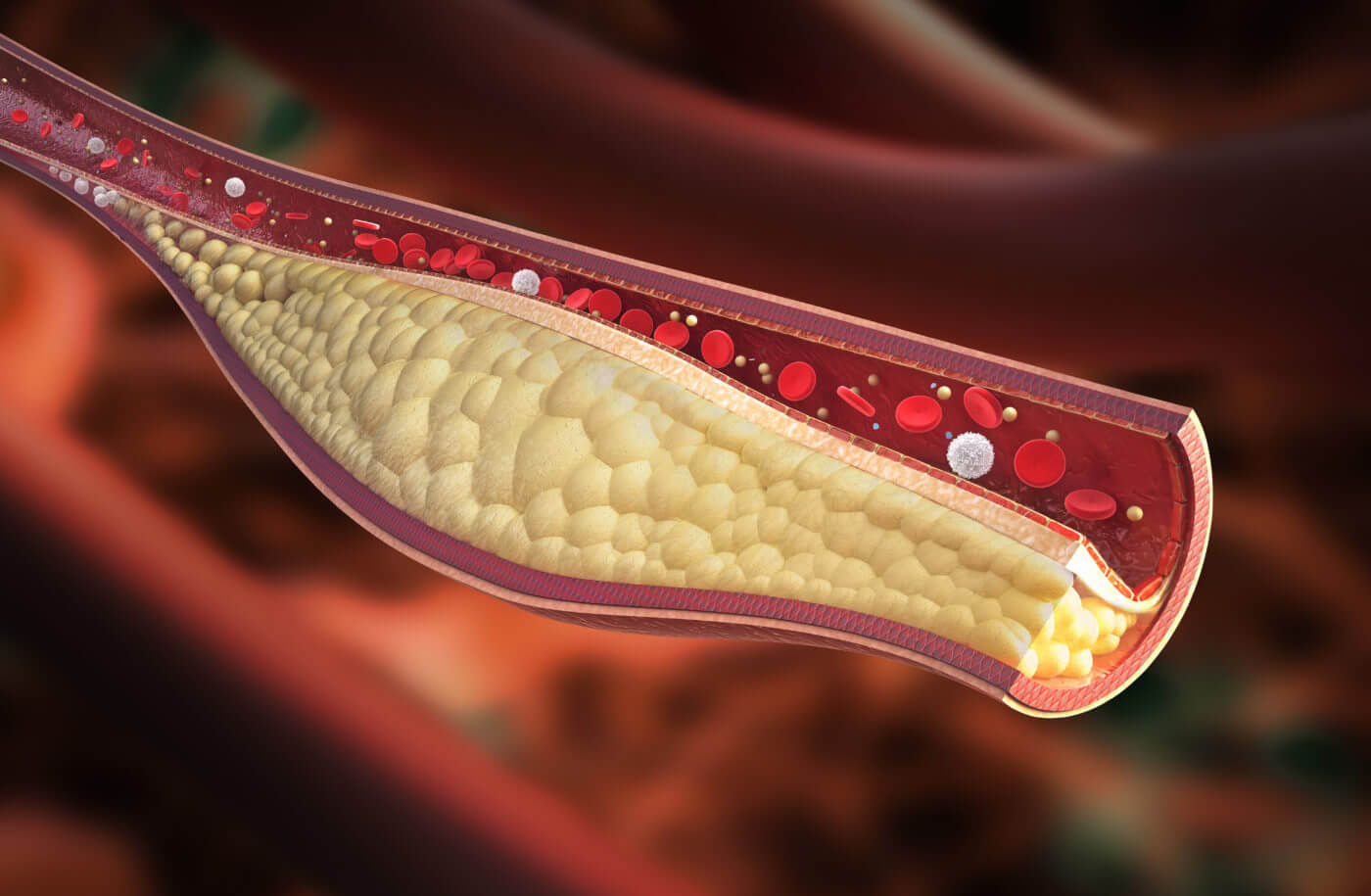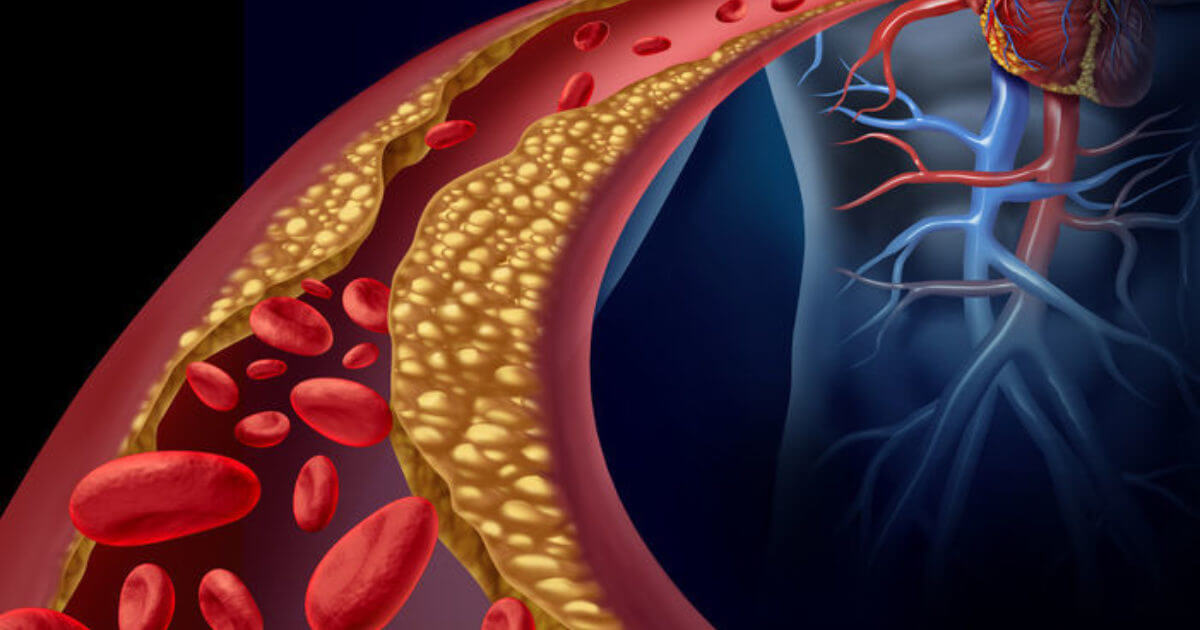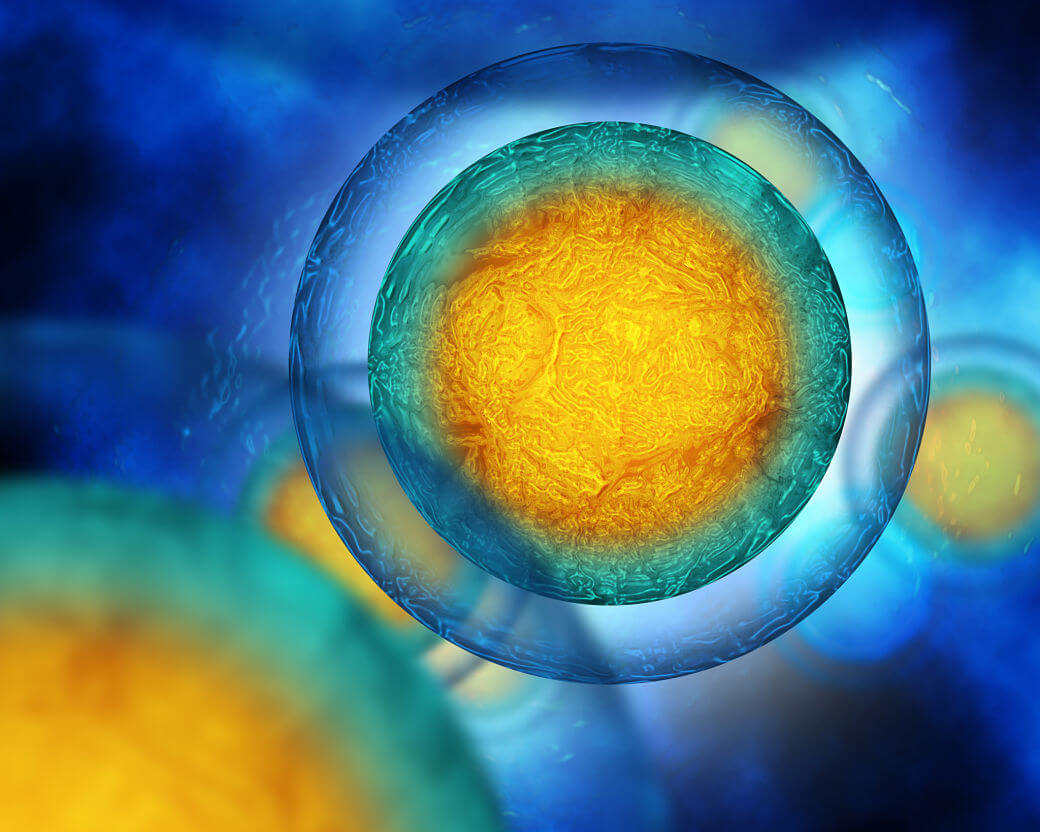Calls for Ukraine
Calls for Europe
Calls for USA

Atherosclerosis is a disease of the arteries, in which there is a gradual thickening of the walls and narrowing of the lumen of the vessels due to the formation of fatty plaques and cholesterol deposits. This causes a violation of the blood supply to organs and tissues, which can lead to serious consequences, such as myocardial infarction, stroke and other cardiovascular diseases.
As a major cause of cardiovascular disease and a key player in heart attack and stroke, atherosclerotic vascular disease can have devastating and life-threatening consequences.

Depending on the localization of cholesterol plaques, there are several types of atherosclerosis, each of which has its own symptoms and signs, and also requires the use of specific therapeutic methods.
Cerebral atherosclerosis, the treatment of which is one of the urgent problems of modern medicine, is a disease accompanied by the deposition of atherosclerotic plaques in the vessels of the brain. Narrowing of the vessels causes a violation of blood flow. If an atherosclerotic plaque becomes too large, it can block blood flow to the brain and cause an ischemic stroke.
Another complication of the cerebral form of the disease is an aneurysm – an abnormal stretching of the artery wall. A ruptured artery causes bleeding in the brain and leads to a hemorrhagic stroke. Treatment of cerebral vessels may include drug therapy or surgery.
The first signs of atherosclerosis of cerebral vessels:
Atherosclerotic plaque formation can occur at any age. Treatment of cerebral vasoconstriction is of great importance, since the disease, left unattended, can lead to long-term neurological and motor disorders, and even death.
Risk factors for the development of the cerebral form of the disease include:
Obliterating is a form of atherosclerosis in which the arteries of the lower extremities are affected. As a result of the formation of an atherosclerotic plaque, the lumen of the vessels gradually decreases. This can lead to impaired blood flow and malnutrition of the muscles and tissues of the legs.
Symptoms of atherosclerosis of the arteries of the lower extremities include pain in the legs when walking, muscle weakness, a feeling of numbness and coldness in the legs. It is a chronic disease that develops gradually over a long period of time. It is associated with risk factors such as smoking, diabetes, high blood cholesterol, high blood pressure, metabolic disorders, and heredity.
Treatment depends on the stage of atherosclerosis of the lower extremities. At the initial stage, drug therapy with cholesterol-lowering drugs is sufficient. In advanced stages, surgery may be required.
The aorta is the main arterial vessel that exits the heart. Conventionally, it is divided into three parts: the ascending aorta, the aortic arch and the descending aorta. The descending section is also divided into the thoracic aorta and the abdominal aorta.
Atherosclerotic plaques can appear in various parts of the main artery. Depending on their localization, atherosclerosis of the thoracic aorta or abdominal aorta is distinguished. Pathological changes in the main artery can lead to various problems. In some patients, progressive plaque enlargement leads to narrowing of the aorta. At the initial stage, the disease is asymptomatic. The first manifestations occur with significant stenosis of the vessel. They include:
Aortic atherosclerosis is a serious problem because most patients are unaware of their disease. Therefore, treatment in many cases begins with a great delay.
The two main areas that are affected in atherosclerosis are the lower abdominal aorta and the coronary arteries. The vessels of the heart have branching points, similar to a fork in the road. In these areas, deposits of fat and cholesterol often accumulate and atherosclerotic plaques form.
As the disease progresses, the plaque begins to protrude into the lumen of the artery, reducing its diameter. At this stage, stenosis can already be detected by angiography.
Coronary arteries that have lost 50% to 75% of their internal diameter can no longer provide enough blood flow to meet the increased demands of the heart muscle during exercise. At this stage, stenosis of the heart vessels leads to ischemic symptoms, usually angina pectoris, during exercise. If the atherosclerotic plaque thickens enough to fill 80% to 90% of the diameter of the coronary artery, symptoms of coronary artery disease appear even at rest.
Over time, the area of the blood vessel that lies outside the narrowed segment gradually expands, collaterals appear (circumvention of blood flow). Thus, there is a partial compensation for impaired blood flow if stenosing atherosclerosis of the coronary arteries develops gradually.
Despite the fact that the body is trying to adapt to pathological changes, there is always a risk of blockage of the artery. Sudden narrowing can lead to ischemia and death of the heart muscle. More than 95% of all myocardial infarctions are caused by rupture of atherosclerotic plaque with thrombus formation. Therefore, the timely treatment of atherosclerosis of the heart vessels is of such great importance.

The disease is usually asymptomatic until it reaches an advanced stage, when the narrowing of the arteries becomes so severe that blood flow is interrupted. If an atherosclerotic plaque ruptures and forms a blood clot, it can cause a heart attack or stroke.
Symptoms that occur with moderate to severe disease depend on which arteries are affected.
In many cases, atherosclerosis at the initial stage does not manifest itself in any way, so it is very important to periodically undergo preventive cardiac examinations.
Atherosclerosis is a complex disease that progresses with age. Although the exact cause of the development of the disease is unknown, it can begin with damage to the inner layer of the artery. This is due to certain risk factors such as a family history of cardiovascular disease and age. Unfortunately, they cannot be influenced. However, there are other factors that can be controlled. These include:
Regular preventive examinations allow to identify risk factors and take timely measures to prevent the development of the disease.

Diagnosis includes taking an anamnesis, physical examination, as well as a number of laboratory and instrumental studies. Most often assigned:
Diagnosis of obliterating atherosclerosis may also include the rheovasography of the lower extremities.
Therapy of the disease is aimed at slowing or stopping the formation of plaques and reducing the severity of symptoms. A set of measures includes: lifestyle changes (diet, exercise, quitting smoking and drinking alcohol), as well as taking medications.
Surgical treatment of atherosclerosis is indicated in severe cases, when the plaque completely or almost completely blocks the lumen of the artery. In this case, operations such as bypass surgery or atherectomy (plaque removal) are performed.

Despite the use of modern pharmacological and surgical techniques, atherosclerosis remains the leading cause of death from cardiovascular diseases worldwide. Cell therapy represents an innovative approach to the treatment of this serious vascular pathology.
Mesenchymal stem cells are one of the types of multipotent cells that can be isolated from almost all human organs and tissues. They have both regenerative and immunomodulatory properties. Recent studies have shown that mesenchymal stem cells are able to exert immunosuppressive, regenerative and atheroprotective effects due to:
Given these properties, mesenchymal stem cells are considered a promising alternative therapeutic option for the effective treatment of atherosclerosis.
The integrity of tissues (including blood vessels) is the maintenance of a balance between its damage and restoration. When tissue is damaged, inflammatory molecules (cytokines and chemocytokines) are released into its environment. They are required to activate stem or progenitor cells at the site of injury. If there are enough of these cells, there is a decrease in inflammation and tissue regeneration.
However, as stem cells decrease in the body or their function is impaired, the tissue does not regenerate. This leads to negative consequences, expressed in an inflammatory reaction and progression of damage to the walls of blood vessels. Regenerative therapy allows stem cells to deliver to the target area and start the recovery process. The dosage of the cell preparation and the duration of therapy depend on the type and severity of the disease. In systemic atherosclerotic disease, repeated injections over several months or even years may be required.
Regenerative therapy triggers several mechanisms at once that help fight the manifestations of the disease.
Endothelial dysfunction is damage to the inner lining of blood vessels (endothelium) under the influence of negative factors. It is this process that is the trigger for the formation of atherosclerotic plaques. Studies have shown that the introduction of stem cells allows you to successfully restore the function of the endothelium, thereby stopping atherogenesis (the process of plaque formation).
Hyperlipidemia (increased blood levels of both cholesterol and triglycerides) is a recognized risk factor for atherosclerotic disease. There is strong evidence that the administration of MSCs can lower serum lipid levels, which subsequently reduces the deposition of fat on arterial walls.
Classic risk factors for atherosclerosis, such as aging, hypertension, hypercholesterolemia, diabetes, and obesity, contribute to the development of inflammation. In the last decade, the anti-inflammatory properties of MSCs have been identified, highlighting their therapeutic potential.
Several studies point to a reduction in plaque size as evidence for the effectiveness of stem cells in atherosclerosis. However, plaque size is not the only negative indicator of disease severity. It is also necessary to consider the effect of plaque stability on the risk of plaque rupture. Rupture and subsequent thrombosis of the vessel lumen is the predominant mechanism underlying acute myocardial infarction and ischemic stroke. The therapeutic use of MSCs increases the stability of plaques and reduces the risk of a severe outcome of the disease.
MedTour company cooperates with the world’s best regenerative medicine clinics. If you are interested in the possibility of treating atherosclerosis with an innovative method, call us or fill out the feedback form. The coordinating doctor will answer all your questions and select the best clinic for cell therapy.
Please rate the work of MedTour
